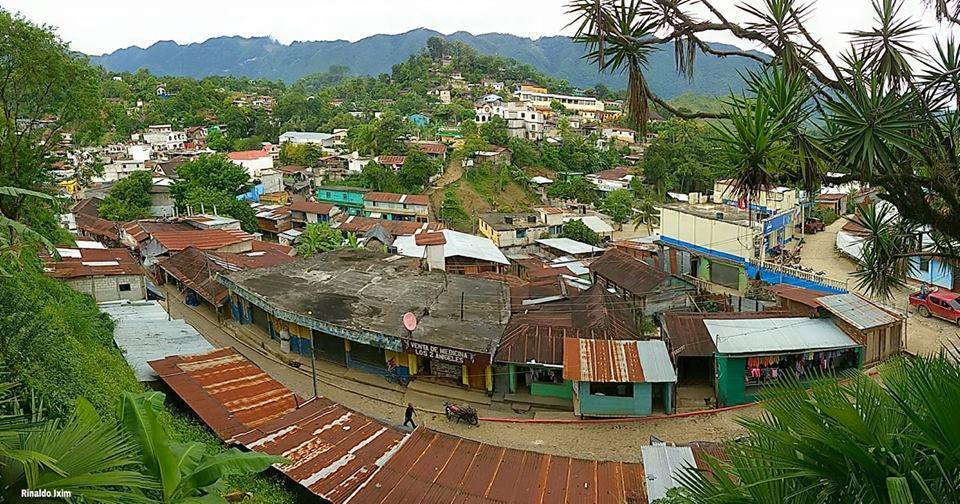The Sabbath Day -- Feb 14, 2021
On Valentine's Day we traveled two hours to the Sepamac Branch of the Church of Jesus Christ of Latter-day Saints. This is the Branch where our Church membership records reside -- it is the closest unit of the Church to Cahabon, where we are living. The road is very narrow, with many many curves (hairpin curves), so we are not sure we should do it again (especially in a rented pickup). The road isn't too bad, but there isn't much passing room, so it can be really tricky when a truck or bus comes from the other way, and we have to make room, somehow, to let them pass by. Sometimes it's a big drop off on one side or the other, so one of the vehicles has to back up to find a wider place in the road .

We had arranged for a young man, Angel Gabriel (yes, that's his name) to meet us in Sepamac to be our interpreter. He knows a little English from his mission service in Belize. But, he was not there, so we had to go to Chulac to pick him up (another 15 minutes there and back). So, by the time we actually got to Church we were 25 minutes late. As you can imagine, it caused quite a stir to have an older white couple coming into the meeting -- late. They only had available chairs in the front, so we had to walk to the front of the chapel to sit down. (I think Angel had told them we were coming.)
Arriving at Church in Sepamac:
I had my Kekchi presentation in my purse, which could introduce us, so I showed it to Angel and he suggested I give it during the Sunday School time. It was a nice way to connect with the Kekchi people (the meeting was in the Kekchi language). I always get choked up when I tell about the Coban Temple, even though I am speaking in a foreign language.
No one was wearing a mask, and everyone wanted to hug us and shake our hand. This whole area is "green" now (very little Covid), so I assume it was safe. They are such sweet people. The women came up to me and hugged me. We felt very welcome.
This sweet sister was especially nice to me. Look at her beautiful clothing. They are dressed in these beautiful blouses and skirts ALL THE TIME (in different colors, but the skirt and blouse always match)! They always look so lovely. Even if they are working they are dressed beautifully.
They had Primary, Young Women and Young Men during the Sunday School time. In fact, their meeting schedule was the same as it used to be in Utah before the Covid restrictions changed everything. They have a very nice building, with a separate building for classes. Amazing -- in a land of such poverty.
I loved this little baby girl, and asked if I could hold her. Here, she is looking at me, and wanting to take my glasses (she reached up for them several times).
Leaving the Church
"Social Event" -- at our home in Cahabon
On Saturday, we invited a formerly active member of the Church, who lives in Cahabon, to our home for homemade cookies and ice cream (oatmeal raisin cookies that I made from scratch -- interesting experience without a mixer or other usual ingredients. Ricardo Lopez loved the cookies. He didn't bring his wife (who is Catholic), but we sent some cookies home to her, and asked that he could bring her next Saturday. We plan to make this "homemade cookies and ice cream" social event a regular Saturday evening event.
The Mission President previously gave us a list of names of 10 people, living in the Cahabon area, who have asked for information about the Church. With Gady's help (our interpreter), we have been calling them. Some have moved, and some have not answered their phone. But three, and possibly four, have accepted our invitation to come to our home for cookies and ice cream this coming Saturday. When I told President Poou about our "social event" he said, "Great . . . we hope little by little to find the way to have something official for Cahabon." So, things are moving forward -- little by little. It may take several months before we can meet officially, but in the meantime we are inviting people to our home, to meet them, and hopefully become their friends.













